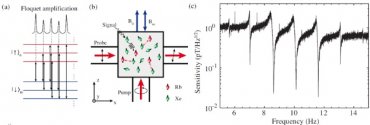You are using an out of date browser. It may not display this or other websites correctly.
You should upgrade or use an alternative browser.
You should upgrade or use an alternative browser.
News on China's scientific and technological development.
- Thread starter Quickie
- Start date
- Research team says latest Sunway machine is on a par with the US Frontier, named as the world’s most powerful just weeks earlier
- Its speed has made it possible to train an artificial intelligence program with 174 trillion parameters, rivalling the synapses in the human brain
The Chinese research team say potential uses of the AI model running on the Newest Generation Sunway supercomputer include autonomous vehicles and facial recognition. Photo: Shutterstock
Chinese scientists say a new supercomputer is so fast it has successfully run an model as sophisticated as a human brain.
The achievement puts the Newest Generation Sunway supercomputer on a par with Frontier, the latest machine built by the US Department of Energy, which earlier this month was named the world’s most powerful.
The Chinese team used the Sunway machine to train the AI model – called bagualu which means “alchemist’s pot” – with 174 trillion parameters, rivalling the number of synapses in the brain for the first time.
Great news, although I'm not clear how the journals selected to be in the high-quality list are placed there.Wow! In the annual Nature Index (which tracks author affiliations in research articles across high-quality science journals) the 31 fastest-rising institutions last year were ALL in China!
The Chinese government's push to get scientists to publish more in Chinese journals may muddy this metric in future years, unless Nature agrees to add some Chinese journals to its "high-quality journals" list or unless someone else comes up with a new list of high quality journals that treats Chinese journals fairly. Thus far, Nature has been pretty objective and apolitical in its overall tone, let's hope they can keep it that way in the future.
I also wonder the level of Russia's impact on the list and the effect of sanctions on the publication behavior of Russian scientists?
What about my beloved IndiaWow! In the annual Nature Index (which tracks author affiliations in research articles across high-quality science journals) the 31 fastest-rising institutions last year were ALL in China!
A research team from University of Science and Technology of China made important breakthrough in quantum amplification.
They have found a new way to enhance quantum amplification. In this new way, they can "simultaneously enhance and measure multiple magnetic fields with at least one order of magnitude improvement".
Notably, this innovation is based on the theories and techniques developed by themselves in the past.
Paper published in English:
USTC news release in Chinese:
Note their past archievements:
News report in Chinese by Xinhua:
They have found a new way to enhance quantum amplification. In this new way, they can "simultaneously enhance and measure multiple magnetic fields with at least one order of magnitude improvement".
Notably, this innovation is based on the theories and techniques developed by themselves in the past.
Paper published in English:
Detection of weak electromagnetic waves and hypothetical particles aided by quantum amplification is important for fundamental physics and applications. However, demonstrations of quantum amplification are still limited; in particular, the physics of quantum amplification is not fully explored in periodically driven (Floquet) systems, which are generally defined by time-periodic Hamiltonians and enable observation of many exotic quantum phenomena such as time crystals. Here we investigate the magnetic-field signal amplification by periodically driven 129Xe spins and observe signal amplification at frequencies of transitions between Floquet spin states. This “Floquet amplification” allows us to simultaneously enhance and measure multiple magnetic fields with at least one order of magnitude improvement, offering the capability of femtotesla-level measurements. Our findings extend the physics of quantum amplification to Floquet spin systems and can be generalized to a wide variety of existing amplifiers, enabling a previously unexplored class of “Floquet spin amplifiers”.
USTC news release in Chinese:
中国科学技术大学中国科学院微观磁共振重点实验室彭新华研究组在自旋量子精密测量领域取得重要进展,首次提出和验证了Floquet自旋量子放大技术,该技术克服了以往只在单个频率处量子放大的局限性,实现了多频段极弱磁场信号的量子放大,灵敏度达到了飞特斯拉水平。相关研究成果于6月9日以“Floquet Spin Amplification”为题在线发表于著名国际学术期刊《Physical Review Letters》上[Phys. Rev. Lett. 128, 233201 (2022)],并被选为“编辑推荐(Editors’Suggestion)”文章。
Note their past archievements:
彭新华研究组长期瞄准量子精密测量领域,利用量子精密测量技术来解决世界前沿科学问题。包括于2018年自主研发出超灵敏原子磁力计,并且利用该技术实现了无需磁场的新型核磁共振技术——“零磁场核磁共振”[Sci. Adv. 4(6), eaar6327 (2018)];于2019年至2020年发展新型原子磁力仪技术[Adv. Quantum Technol. 3, 2000078 (2020),Phys. Rev. Applied 11, 024005 (2019)],达到了国际领先水平的磁场探测灵敏度;通过进一步研究,于2021年实现了新型的自旋微波激射器,在低频段创造了国际最佳的磁探测灵敏度[Sci. Adv. 7(8), eabe0719 (2021)]。之后,该研究组将已发展的平台型量子精密测量技术用于寻找超越标准模型的新粒子,取得了一系列对推动学科领域发展有实质性贡献的研究成果。包括于2021年利用新型量子自旋放大器搜寻暗物质候选粒子,首次突破国际公认最强的宇宙天文学界限[Nat.Phys. 17, 1402 (2021)],以及实现了对一类超越标准模型的新相互作用的超灵敏检验,实验界限比先前的国际最好水平提升至少2个数量级[Sci. Adv. 7, eabi9535 (2021)]。
News report in Chinese by Xinhua:
彭新华研究组研究人员提出了Floquet自旋量子放大技术,克服了以往探测频率范围小等限制,实现了对多个频率的极弱磁场放大。这项技术得益于研究组此前提出的“自旋放大技术”和“Floquet调制技术”,将二者有机结合,从而将量子放大技术推广到Floquet自旋系统。通过理论计算和实验研究,研究团队首次展示了Floquet系统可以实现多个频率待测磁场2个数量级的同时量子放大,测量灵敏度达到了飞特斯拉级级别。
据悉,该工作首次将量子放大技术扩展到Floquet自旋系统,有望进一步推广到其他量子放大器,实现全新的一类量子放大器——“Floquet量子放大器”。
Last edited:
China will surpass the US in about 3 years. This year, China surpassed US in the physical sciences:Wow! In the annual Nature Index (which tracks author affiliations in research articles across high-quality science journals) the 31 fastest-rising institutions last year were ALL in China!
It is already dominant in chemistry, but has some work to do to dominate the life and environmental sciences.

